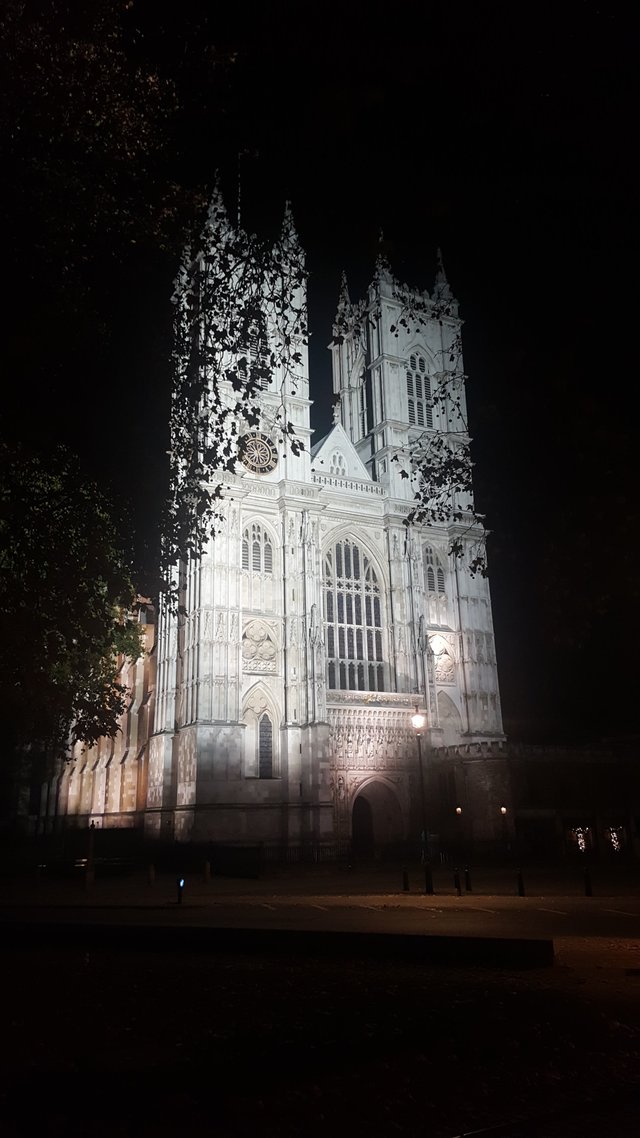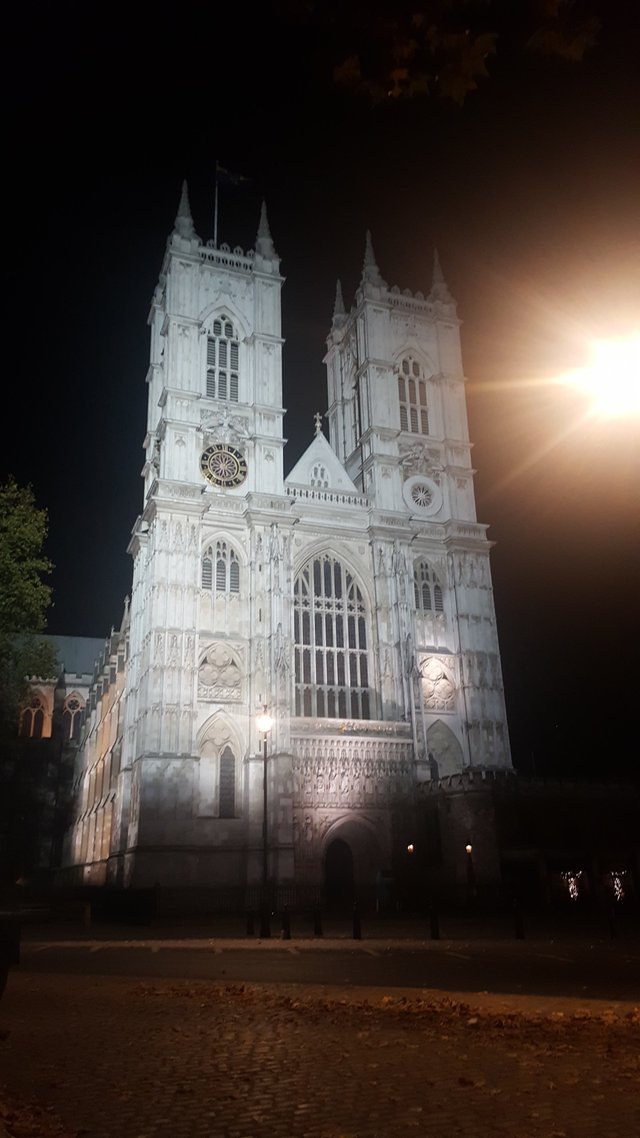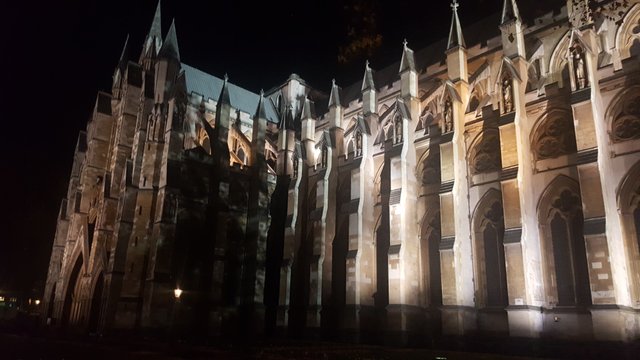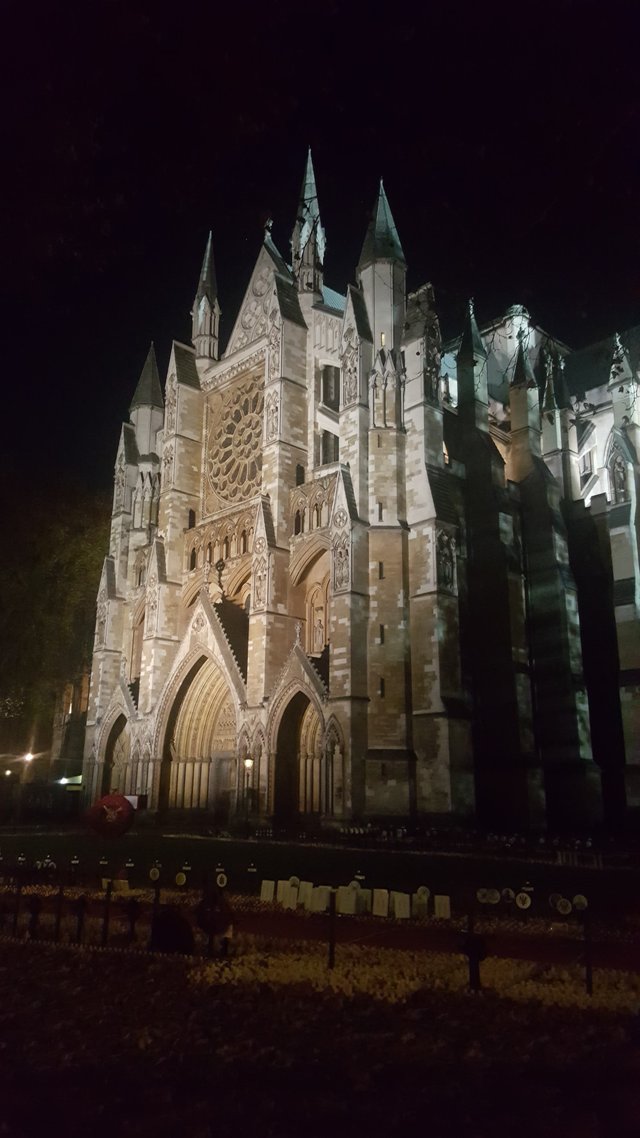Westminster Abbey in London

St. Peter's Church in Westminster, better known as the Westminster Abbey, occupies a unique place in the history of Great Britain. All British sovereigns from William the Conqueror, (except Edward V and Edward VIII) were crowned here. Westminster Abbey is also the place of eternal rest of monarchs from the second half of the 13th century to the mid-eighteenth century.
The Westminster Abbey was built on the command of King Edward the Confessor in the 11th century; In the thirteenth century, Henry III began the reconstruction of the French Gothic church in honor of Edward. Throughout the centuries, all kinds of modifications and additions have been made to the church building. One of the most important was the Chapel of the Virgin built by Henry VII, which now bears his name. In the early part of the eighteenth century, Nicholas Hawksmoor designed the Gothic towers on the western side. Above the door on the west were added statues representing martyrs of the twentieth century. Westminster Abbey abounds in memorials, memorial plaques, statues and other objects meant to commemorate famous and respected people, although not all are buried here.

The cellar has some massive barriers that in the 14th century represented a new technology and allowed to raise the stone roof to over 30 meters high; the highest nave in England. The area is flooded with light by the glass window on the western side of the church. It was designed by James Thornhill and built in 1735. Under the window is the tomb of the unknown soldier, who commemorates the thousands of dead soldiers in World War I and who could not be grasped. Nearby, on the floor is a memorial plaque dedicated to Sir Winston Churchill, who is buried in Bladon near the Blenheim Palace.
The choir is the place where 22 young boys and 12 vicars sing during their daily job. The hymn "Zadok the Priest" was written by Handel for the coronation of George II and is still included today in the coronation ceremonies.

The sanctuary is where the coronations takes place. Behind the high altar is a mosaic that shows the mystery dinner dating back to 1867. On the altar is a pair of candles bought with the money left to the church by Sarah Hughes, a 17th-century woman. The altar of Edward the Confessor is found in the chapel on the eastern side of the sanctuary, the most venerated part of the church. On the stone divan dating from the fifteenth century there are engraved scenes from the life of the saint that was canonized in the 12th century. The throne of Edward I's dating from around 1300 can be admired in this part of the Westminster Abbey. Used in all the coronation ceremonies that took place here in 1308, the throne was made to incorporate the Scottish stone of the coronary that Edward brought to England in 1296. This stone remained in the Westminster Abbey for seven hundred years until when he was brought back to the Edinburgh Castle in 1996.
The chapel of Henry VII was finished in 1519. The entrance to the chapel is made by two bronze doors. The nave is a remarkable piece of architecture. The very busy ceiling and statues of the saints that are set up above the balcony where the choir is standing endure an atmosphere of history. The chapel is decorated with images of the Knights of the Order of Bath, which is dedicated to the chapel. Also, at the Westminster Abbey is the tomb of Queen Elizabeth I. Also, her half-Catholic sister, Queen Maria, is also bloody here.
Another important spot at Westminster Abbey is the Corner of Poets. The first person buried here was Geoffrey Chaucer in 1400. There are memories dedicated to John Dryden, Edmund Spencer, Dr. Samuel Johnson, Robert Browning and Charles Dickens to name just a few. Many illustrious people are commemorated here although buried in other places. Among them are: William Shakespeare, John Milton, Wordsworth, Keats and Shelly, the sisters Bronte and Jane Austin. Not all those commemorated here are poets or writers. There are also several deacons of the church or other priests, composer Handel or actor David Garrick. The last of those buried here is Sir Laurence Olivier.

Timetable:
Monday - Friday: 9:30 am - 3:30 pm (except on Wednesday when the program is 9.30am - 6.00pm). Saturday: 9.30am - 1.30pm.
Saturday from June to September: 9.30 am - 3.30 pm.
Prices:
Adults: £ 16.00;
Students: £ 6.00;
Elders and student groups: £ 10.00
Family ticket 2 adults and 2 children or 1 adult with three children: £ 28.00
There is also an annual ticket that costs £ 36.00. Address: Westminster Abbey is very easy to find being located right in the heart of London opposite The Parliament.